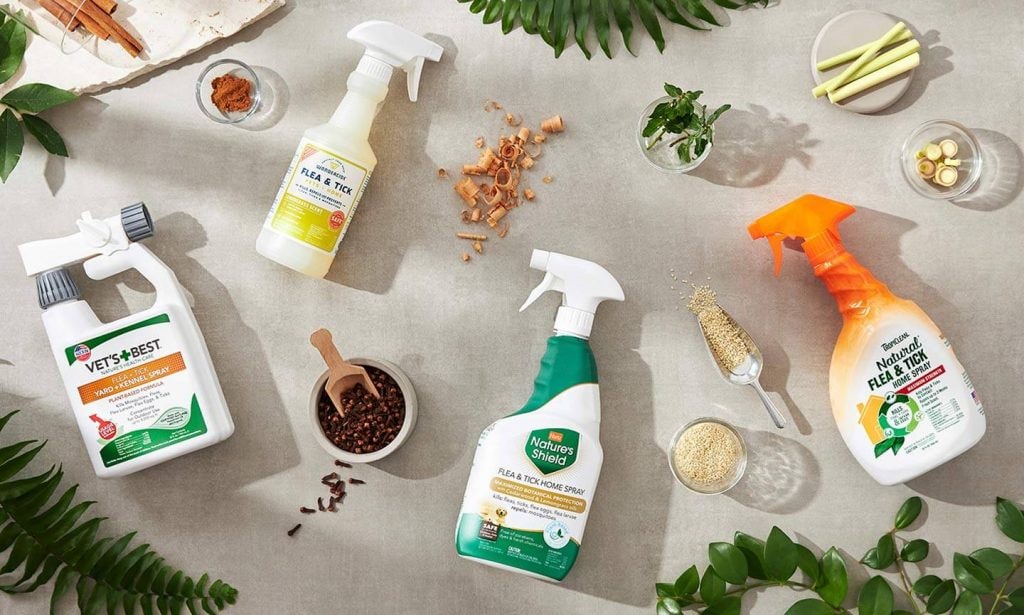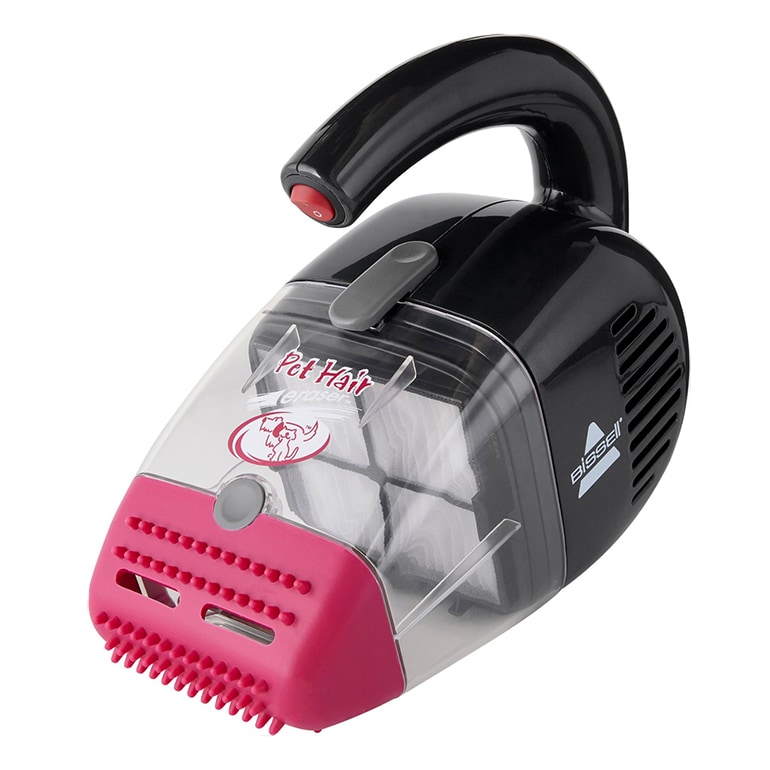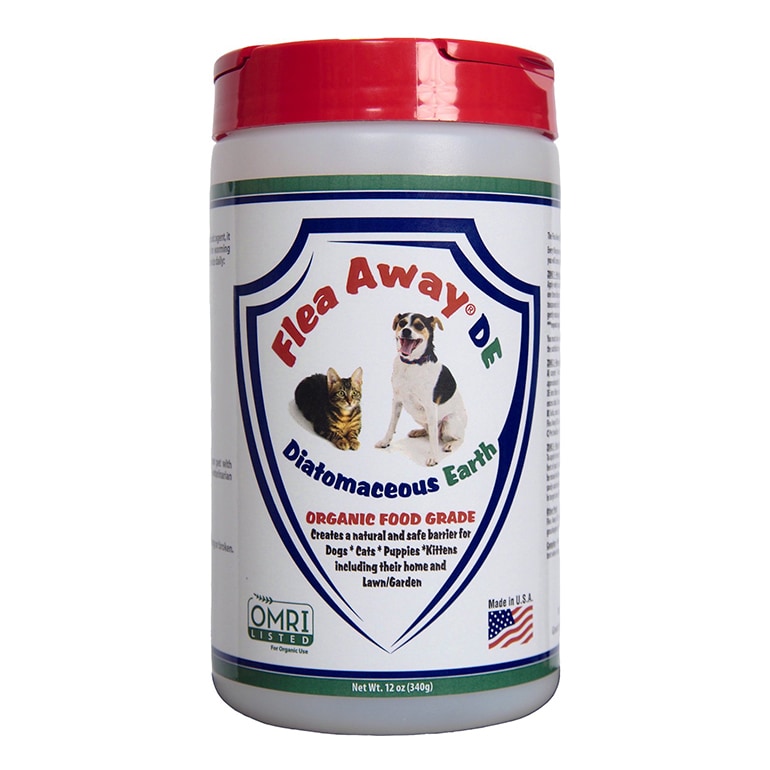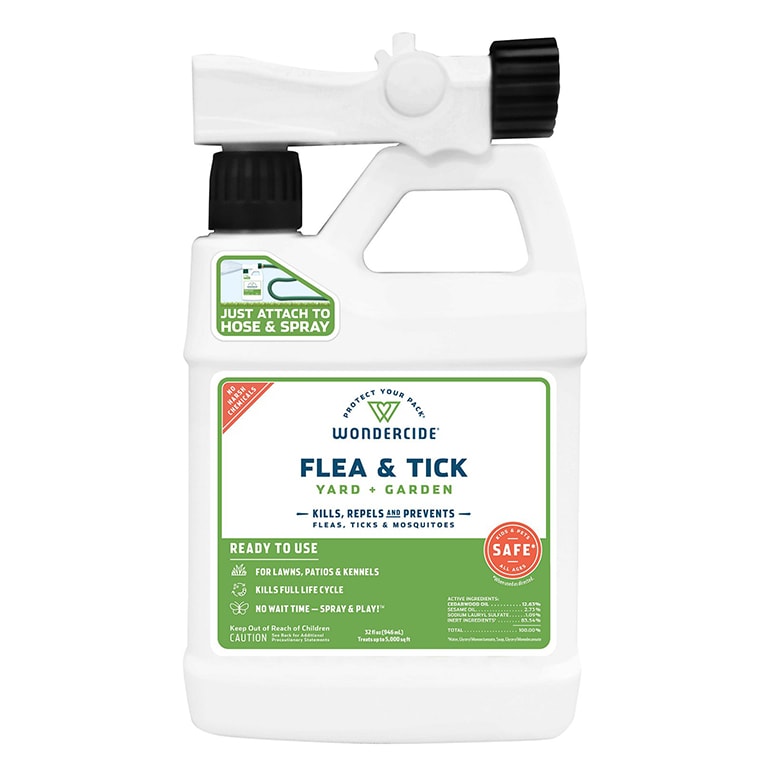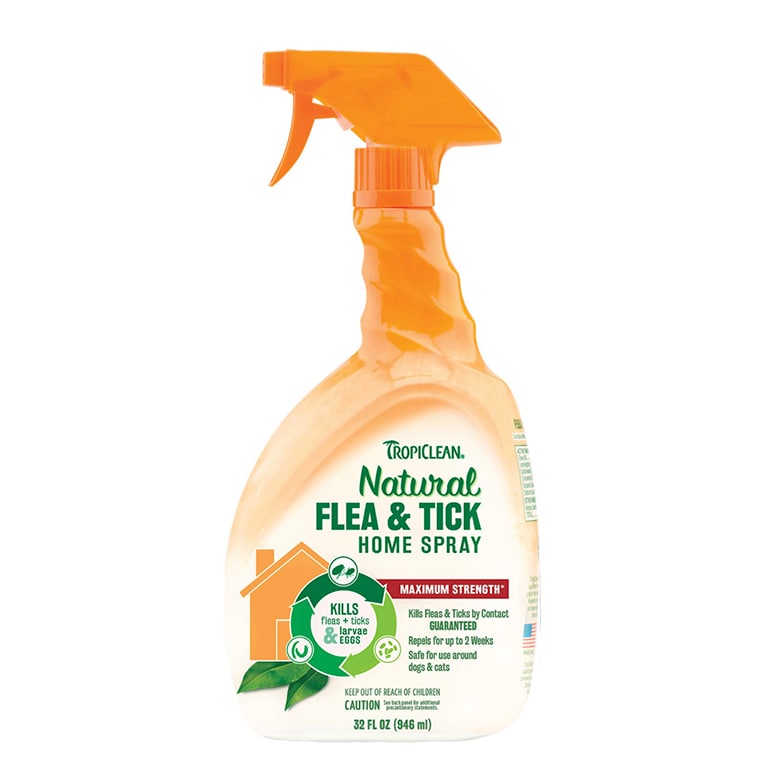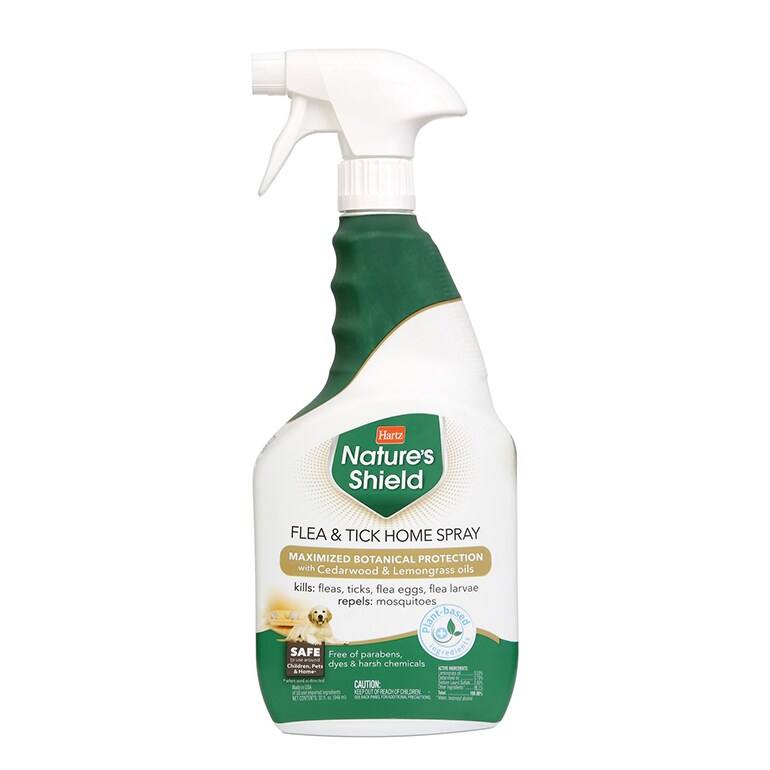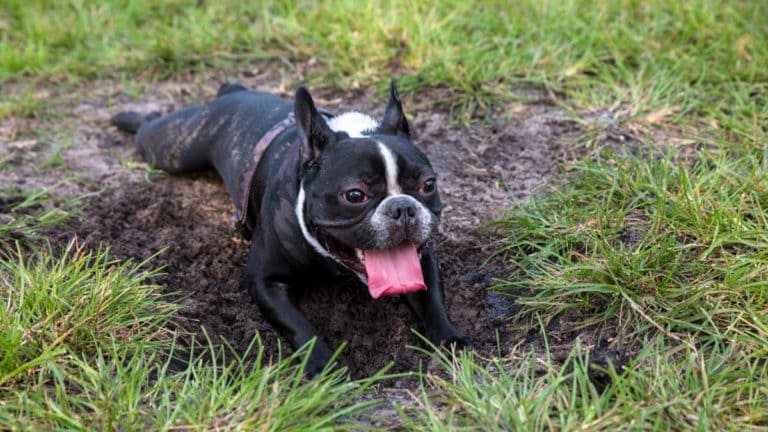When battling the almighty flea, it’s not only important to prevent fleas from jumping on and biting your pet—it’s also crucial to keep fleas from living and thriving in your home and yard. While there are many chemical insecticides that you can use to kill fleas in your environment, many people don’t like the idea of using these harsh products in their home and yard. Fortunately, if you prefer more natural remedies for fleas invading your space, there are several tried-and-true strategies that you can utilize before resorting to the big-gun chemicals.
From gentle flea products to prevention tips, here’s how to naturally fight fleas around your living space.
Step 1: Start Early
If you live in an area where fleas are known to be a problem, don’t wait until you see fleas on your pets to start treatment. After all, while you may have only spotted a flea or two on your pet, there are likely already 10 fleas in cocoons, 30-40 larvae (baby fleas) and 50+ flea eggs lurking under furniture cushions, in dog beds, embedded in carpets and other nooks and crannies. Yikes!
You will be more successful in the flea flight if you begin early, so start all treatments one month before flea season begins. Not sure when it begins in your area? Call your local veterinarian: They will be intimately familiar with the beginning and ending of flea season in your area. If you live in a warm climate year-round, then fleas are a problem year-round: Start now.
Time for a Deep Clean
The best defense against fleas taking over your home is frequent vacuuming and cleaning. Vacuuming can remove most adult fleas, eggs and larvae from the environment. Yes, I know this isn’t sexy—but it works!
If you live in an area with lots of fleas, this can mean vacuuming the floors and carpets daily (including under furniture, along baseboards and over any floor cracks). All furniture should be vacuumed at least weekly, including under cushions. Look to a handheld vacuum, like Bissell Pet Hair Eraser Corded Handheld Vacuum, to easily give every inch of your furniture a thorough clean.
After vacuuming, be sure to dispose of the vacuum bag immediately to prevent fleas from escaping. If you have a bagless vacuum, empty the dustbin into a trash bag, tie it off and then dispose of it immediately outside the home. You can also dust the inside of the dustbin with a natural flea powder (more on those below!).
Pet bedding and your own bedding (especially if your fur baby frequently sleeps with you) should also be laundered weekly to keep fleas from camping out beneath your blankets.
What about the yard? Flea larvae like dark, moist areas, and are likely to be hiding under decks, in mulch and in leaf piles, so rake up leaves and keep the grass cut short. (Both your pet and the local HOA will thank you!)
Also be aware that any wildlife or stray or neighboring animals that wander into your yard can bring fleas along with them—giving pet parents all the more reason to explore the natural remedies for fleas below!
Natural Flea Powders and Sprays to Consider
Natural remedies for fleas around your home and yard include diatomaceous earth and calcium carbonate powders. Both are naturally occurring composites that work by drying out all life stages of fleas, which kills the little bloodsuckers. Safe for use around pets (as well as on them as a topical treatment with your vet’s approval), consider Flea Away Diatomaceous Earth for Dogs & Cat, or you can also look for these powders in your local home improvement or gardening store.
After vacuuming, sprinkle your natural flea powder of choice on carpets, ped bedding, hard floors and furniture. Make sure to get it into cracks and under throw rugs, and use a broom to disperse and work the powders into carpets. (You can vacuum up excess powder 24-48 hours after application, per package instructions.) To prevent future infestation, you’ll want to use your natural flea powder at least once a month during the warmer months.
You can also apply diatomaceous earth and calcium carbonate powders to grass and mulch in your backyard. If your pet has a favorite resting spot, concentrate on that area since that is where the fleas are most likely to be.
Prefer a spray to powders? Try Wondercide Yard & Garden Flea & Tick Spray for outside your home. Free of harsh chemicals and safe for use around pets (you don’t have to wait for it to dry before letting your pet outside, per Wondercide), this spray uses cedarwood oil to repel and kill fleas, and can be applied with a hose sprayer to lawns, plants, patios and even kennels. Per manufacturer's instructions, the formula should be sprayed twice within 2-10 days around outdoor areas, and reapplied every 30-45 days.
For inside your abode, you can use its sister spray, Wondercide Topical & Indoor Flea & Tick Spray. This plant-based formula can be sprayed on flooring, carpeting, furniture and pet bedding. With your vet’s OK, it can even be used topically on your furry friends to help keep them flea free. TropiClean Natural Flea & Tick Home Spray and Hartz Nature’s Shield Flea & Tick Home Spray are two other plant-based formulas that utilize ingredients like cedarwood and lemongrass to naturally fight fleas inside, and are safe to use around animals.
How to Keep Pests from Persisting
Natural remedies for fleas can work, but they often do take more effort and intention than the quick-kill pharmaceutical-grade flea kill products. To ensure that your earth-friendly routine is a success, don’t forget to address the fleas that may on your pet, as well as in the environment: Talk to your veterinarian about the best ways to prevent and treat fleas on your four-legged loved ones.
Also make sure that you are preventing fleas on all the pets in the household—not just one. While keeping up with your dog’s flea treatments may be a no brainer (you don’t want them to pick up any pests on your daily walks, after all), you might find yourself being more lax with flea prevention for your indoor cat. Remember that hitchhiker fleas can hop onto you or guests and eventually make their way inside your home and onto your kitty, so it’s vital that you protect them, too.
You can learn more about flea treatments for cats here and dogs here.
If you already suspect fleas in your home (see how to spot the buggers here), it may take weeks to rid yourself of the infestation. Furthermore, the problem may seem to get worse before it gets better. This is because already-laid eggs will continue to hatch and thus make more fleas. Be patient and consistent with vacuuming and cleaning and your other control methods, and the problem will eventually clear.
If you still detect fleas in your home after a month or so, then you may need to employ prescription flea products and chemical insecticides to reduce the problem, even if it is for a short period of time. Consult a bug control expert for their advice on how to proceed.
With time, intention and the right tools, you and your pet can have a blessed flea-free existence—and hopefully a natural one at that! Get more tips on treating your home for fleas.
Share:
